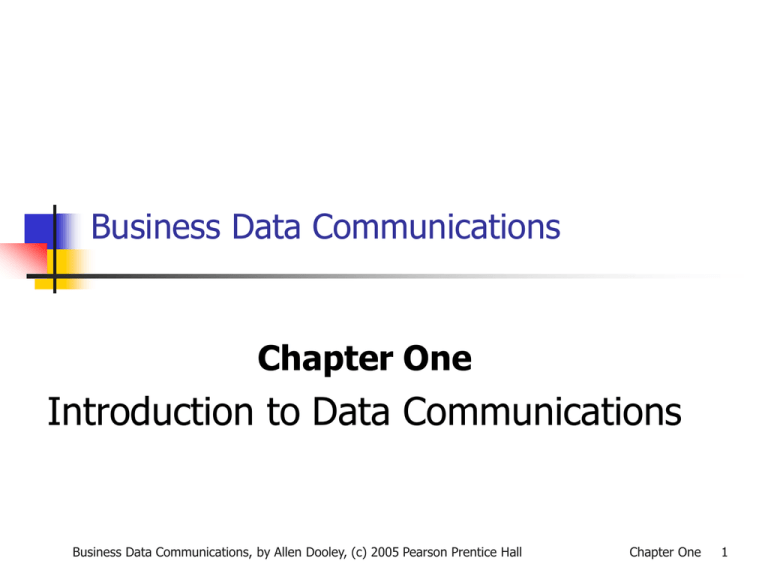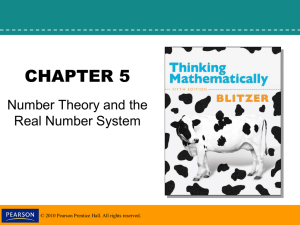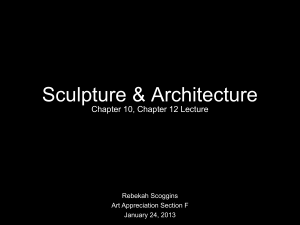
Business Data Communications
Chapter One
Introduction to Data Communications
Business Data Communications, by Allen Dooley, (c) 2005 Pearson Prentice Hall
Chapter One
1
Changing our World
Business Data Communications, by Allen Dooley, (c) 2005 Pearson Prentice Hall
Chapter One
2
Primary Learning Objectives
Identify five data communications phases
Understand the importance of protocols and
standards
Be familiar with the OSI and TCP/IP networking
models
Describe the benefits of a layered architecture
Recognize the general categories of networks
Business Data Communications, by Allen Dooley, (c) 2005 Pearson Prentice Hall
Chapter One
3
Five Data Communications Phases
1960s - Digitization of Data
1970s - Growth of Data Communications
1980s - An Era of Deregulation
1990s - The Internet as a Common Tool
2000s - Pervasive Computing
Business Data Communications, by Allen Dooley, (c) 2005 Pearson Prentice Hall
Chapter One
4
1960s –
Digitization of Data
Digitization transcribes data into binary form
First large-scale, mainframe computer systems are
proprietary and they use a closed architecture
technology
The trend today is for open architecture technologies
Business Data Communications, by Allen Dooley, (c) 2005 Pearson Prentice Hall
Chapter One
5
1960s –
Digitization of Data
Business Data Communications, by Allen Dooley, (c) 2005 Pearson Prentice Hall
Chapter One
6
1970s –
Growth of Data Communications
With greater frequency, businesses automate their
previously manual processes, using computer
technology
As a result, computers become more prevalent
Increasingly, computers need to communicate with
each other so that their data and resources can be
shared
Data communication infrastructures evolve in
response to this need, particularly packet-switching
networks
Business Data Communications, by Allen Dooley, (c) 2005 Pearson Prentice Hall
Chapter One
7
1970s –
Growth of Data Communications
Business Data Communications, by Allen Dooley, (c) 2005 Pearson Prentice Hall
Chapter One
8
1980s –
An Era of Deregulation
Initially, the telecommunications industry in the
United States runs as a monopoly under Bell
Telephone/AT&T
In 1984, the United States deregulates long
distance telecommunication resulting in the breakup
of Bell Telephone/AT&T
Deregulation’s intent is to provide greater
competition in a given market
Business Data Communications, by Allen Dooley, (c) 2005 Pearson Prentice Hall
Chapter One
9
1990 –
Internet as Common Tool
In 1969, ARPA evolves into ARPANET, which
eventually evolves into today’s Internet
IPv4, the original protocol version for the Internet
Not designed with multimedia data in mind
Today, hundreds of millions of people worldwide
connect to the IPv4 Internet
IPv6, the latest version of the Internet, will gradually
replace IPv4
Business Data Communications, by Allen Dooley, (c) 2005 Pearson Prentice Hall
Chapter One
10
1990 –
Internet as Common Tool
Business Data Communications, by Allen Dooley, (c) 2005 Pearson Prentice Hall
Chapter One
11
2000s –
Pervasive Computing
Pervasive Computing
A technology so commonly used it can be taken for granted
Essential to future pervasive computing will be
wireless technologies
For example, telemetry allows the wireless
transmission and reception of data for monitoring
equipment and environmental conditions
Business Data Communications, by Allen Dooley, (c) 2005 Pearson Prentice Hall
Chapter One
12
2000s – Pervasive Computing
Business Data Communications, by Allen Dooley, (c) 2005 Pearson Prentice Hall
Chapter One
13
Acme’s use of Telemetry
Business Data Communications, by Allen Dooley, (c) 2005 Pearson Prentice Hall
Chapter One
14
Data Communications
Currently a subset of telecommunications, although
the differences are beginning to blur
Telecommunications includes television, telegraphy,
and telephony
Data communications focuses primarily on the
transmission of data between computing devices
0110010101110001010101
Business Data Communications, by Allen Dooley, (c) 2005 Pearson Prentice Hall
Chapter One
15
Encoding Schemes
Data is transmitted using binary encoding schemes
Binary encoding schemes, of which there are several,
use the binary digits 0 and 1
A new binary encoding scheme called Unicode will
allow for the encoding of more than 64,000 unique
characters
Traditional encoding schemes, such as EBCDIC and
Extended ASCII, allow for only 256 unique characters
Business Data Communications, by Allen Dooley, (c) 2005 Pearson Prentice Hall
Chapter One
16
Protocols
Data communications also depend on protocols
Protocols determine the rules for how something is
performed or accomplished
Protocols become established or defined through a
standards process
Business Data Communications, by Allen Dooley, (c) 2005 Pearson Prentice Hall
Chapter One
17
Standards
Standards may be formal or informal
Informal standards are also called “de facto”
standards
Standards can be proprietary or open
The trend is toward open standards
There are numerous standard-setting bodies
ISO, ANSI, IEEE, IETF, to name a few
Business Data Communications, by Allen Dooley, (c) 2005 Pearson Prentice Hall
Chapter One
18
Networking Models
Models are logical and based on theory
In data communications, two important models are:
OSI – Open Systems Interconnection
TCP/IP – Transmission Control Protocol/Internet Protocol
The OSI and TCP/IP models are both open system
models that use a layered architecture
The OSI has seven Layers
The TCP/IP has four or five layers, depending on the
source
Business Data Communications, by Allen Dooley, (c) 2005 Pearson Prentice Hall
Chapter One
19
The Layering Approach
In a layered model, each layer is responsible for
specific functions
A layer must be able to communicate with the layer
immediately above or below it
However, a layer does not have to “understand” how
a layer above or below works
Designers of networking technologies can create
products that function within a specific layer
Business Data Communications, by Allen Dooley, (c) 2005 Pearson Prentice Hall
Chapter One
20
The OSI Layers
Application
Presentation
Session
Transport
Network
Data Link
Physical
Business Data Communications, by Allen Dooley, (c) 2005 Pearson Prentice Hall
Chapter One
21
The TCP/IP Layers
Application
Transport
Network
Data Link
Physical
The application layer of the
TCP/IP model includes the
application, presentation,
and session layers of the
OSI model.
Business Data Communications, by Allen Dooley, (c) 2005 Pearson Prentice Hall
Chapter One
22
OSI and TCP/IP
These models have several similarities
Both offer layered architectures
Both are open models
They have similar data link layer functions
They have similar physical layer functions
Of the two, TCP/IP is the older and the more popular
Business Data Communications, by Allen Dooley, (c) 2005 Pearson Prentice Hall
Chapter One
23
Networks
Standards and protocols are critical in data
communications when creating a network
Networks have four general classifications
Local Area Network – LAN
Backbone Network – BN
Metropolitan Area Network – MAN
Wide Area Network – WAN
Networks are based on models
Business Data Communications, by Allen Dooley, (c) 2005 Pearson Prentice Hall
Chapter One
24
A Local Area Network
Business Data Communications, by Allen Dooley, (c) 2005 Pearson Prentice Hall
Chapter One
25
A Possible Backbone Network
Business Data Communications, by Allen Dooley, (c) 2005 Pearson Prentice Hall
Chapter One
26
A Metropolitan Area Network
Business Data Communications, by Allen Dooley, (c) 2005 Pearson Prentice Hall
Chapter One
27
A Wide Area Network
Business Data Communications, by Allen Dooley, (c) 2005 Pearson Prentice Hall
Chapter One
28
In Summary
Data communications is a multifaceted field
Many technologists end up specializing in specific areas
Many standard-setting bodies affect its direction
Pervasive computing will transform how the average
person uses and experiences data communications
technology
Business Data Communications, by Allen Dooley, (c) 2005 Pearson Prentice Hall
Chapter One
29








